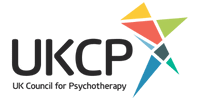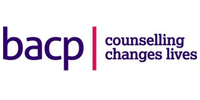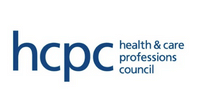Book Schema Therapy in London
Schema therapy (ST) is an integrative approach that brings together elements of cognitive therapy, behavioural therapy, and psychoanalysis. ST was developed by Jeffrey Young in the 1980s and has been shown to be an effective treatment for a variety of mental health disorders, including personality disorders, anxiety disorders, eating disorders, and mood disorders.
Schema Therapy is based on the premise that we all have “schemas” – ways of perceiving and interpreting the world that are based on our past experiences. These schemas can be helpful or harmful, but often can be harmful. For example, someone with a” perfectionist” schema might always be striving for an impossible standard of perfection, which can lead to feelings of anxiety and inadequacy.
Schema Therapy aims to help people change their harmful schemas to more helpful ones. This is done through a variety of techniques, including cognitive restructuring (challenging and changing negative thinking patterns), behavioural experiments (testing out new ways of behaving), and emotional processing (working through difficult emotions).

What is Schema Therapy?
Schema Therapy is a cognitive therapy that helps people change their schemas. Schema therapists use techniques from cognitive therapy to help people identify and change their negative thinking patterns.
Schema therapy is based on the idea that our early experiences shape our views of ourselves and the world, which can lead to negative thinking patterns (schemas) that make it difficult for us to cope with life.
For example, someone with a “perfectionist” schema might always be striving for an impossible standard of perfection, which can lead to feelings of anxiety and inadequacy.
Schema Therapy aims to help people change their harmful schemas to more helpful ones. This is done through a variety of techniques, including cognitive restructuring and selective reparenting, reframing and reattribution.
What are the different schemas?
There are 18 different schemas, which are grouped into the 5 schema domains:
1. Disconnection and Rejection Schemas
-
Abandonment/Instability schema: The belief and expectation that others will leave, that others are unreliable, that relationships are fragile, that loss is inevitable and that you will ultimately end up alone.
-
Mistrust/Abuse schema: The belief that others are abusive, manipulative, selfish, or looking to hurt or use you and are not to be trusted.
-
Emotional Deprivation schema: The belief and expectation that your primary needs will never be met. The sense that no one will nurture, care for, guide, protect or empathise with you.
-
Defectiveness / Shame schema: The belief that you are flawed, damaged or unlovable and you will therefore be rejected.
-
Social Isolation/Alienation schema: The pervasive sense of aloneness, coupled with a feeling of alienation.
2. Impaired Autonomy and Performance Schemas
-
Entitlement/Grandiosity schema: The sense that you are special or more important than others, and that you do not have to follow the rules like other people even though it may have a negative effect on others. Also can manifest in an exaggerated focus on superiority for the purpose of having power or control.
-
Dependence/Incompetence schema: The belief that you are unable to make your own decisions, that your judgment is questionable, and that you need to rely on others to help get you through day-to-day responsibilities.
-
Vulnerability to Harm or Illness schema: The sense that the world is a dangerous place, that disaster can happen at any time and that you will be overwhelmed by the challenges that lie ahead.
-
Enmeshment/Undeveloped Self schema: The sense that you do not have an identity or “individuated self” that is separate from one or more significant others.
3. Impaired Limits Schema
-
Insufficient Self-Control/Self-Discipline schema: The sense that you cannot accomplish your goals, especially if the process contains boring, repetitive, or frustrating aspects. Also, that you cannot resist acting upon impulses that lead to detrimental results.
-
Subjugation schema: The belief that you must submit to the control of others or else punishment or rejection will be forthcoming.
-
Self-Sacrifice schema: The belief that you should voluntarily give up your own needs for the sake of others, usually to a point which is excessive.
4. Other-Directness Schemas
- Approval-Seeking/Recognition-Seeking schema: The sense that approval, attention, and recognition are far more important than genuine self-expression and being true to oneself.
5. Overvigilance and Inhibition Schemas
-
Negativity/Pessimism: The pervasive belief that the negative aspects of life outweigh the positive, along with negative expectations for the future.
-
Emotional Inhibition: The belief that you must control your self-expression or others will reject or criticise you.
-
Unrelenting Standards/Hypercriticalness schema: The belief that you need to be the best, always striving for perfection or that you must avoid mistakes.
-
Punitiveness schema: The belief that people should be harshly punished for their mistakes or shortcomings.
-
Failure schema: The expectation that you will fail or the belief that you cannot perform well enough.
What are some of the different techniques used in schema therapy?
There are a variety of techniques used in schema therapy, including cognitive restructuring, behavioural experiments, and emotional processing.
- Cognitive restructuring involves challenging and changing negative thinking patterns. This can be done through journaling, visualisation, and other exercises
- Behavioural experiments involve testing out new ways of behaving. This can involve trying out new activities, ways of interacting with others, and ways of responding to difficult situations
- Emotional processing involves working through difficult emotions. This can be done through journaling, art therapy, and other exercises.
What are the different types of Schema Therapy?
There are three different types of schema therapy: individual, group, and online.
- Individual schema therapy is the most common type of therapy, and it usually lasts for about 50 minutes
- Group schema therapy is less common, and it usually lasts for about 2 hours
- Online schema therapy is the least common type of therapy, and it usually lasts for about 1 hour.
Schema therapy is typically conducted as weekly individual sessions, although group sessions are sometimes recommended as well. Depending on your needs and goals, Schema Therapy may last anywhere from 6 months to 2 years.
What are the benefits of Schema Therapy?
Schema Therapy has been shown to be effective in treating a variety of mental health conditions, including depression, anxiety, eating disorders, and personality disorders
If you are struggling with a mental health condition, schema therapy may be a good treatment option for you.
How can Schema Therapy help?
Schema therapy can help you:
- Identify your negative thinking patterns (schemas)
- Understand how your schemas have developed
- Learn new ways of thinking and behaving
- Challenge your negative thoughts
- Develop a more positive view of yourself and the world.
If you’re struggling with negative patterns of thinking or behaviour that seem impossible to break free from on your own, schema therapy in London at Alinea Psychologies may be right for you. With the help of a trained schema therapist, you can learn to develop more positive coping mechanisms and break free from the past so that you can live a happier and more fulfilling life moving forward.
If you are struggling with a mental health disorder, it is important to seek professional help. There are many resources available to help you get the treatment you need.






